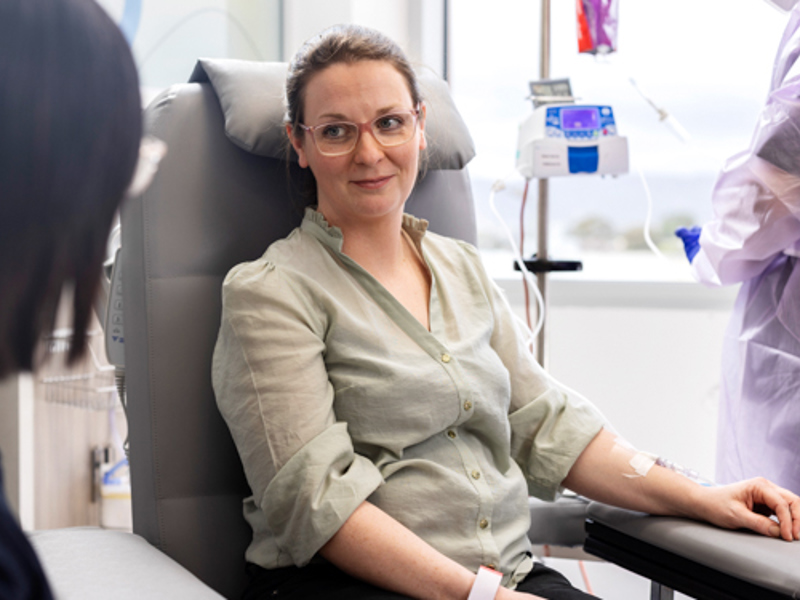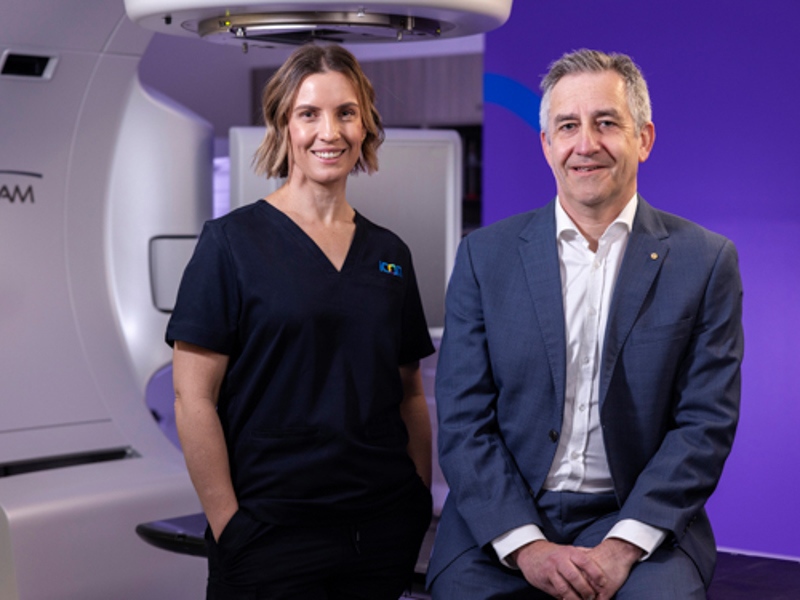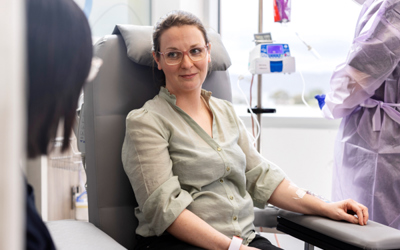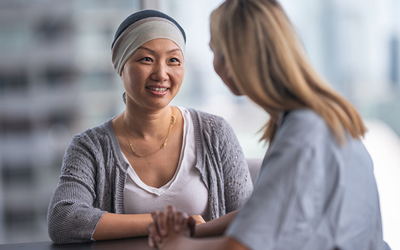Hair loss during cancer treatment
Hair loss can be very distressing and is a common side effect during cancer treatment. It’s important to remember that in most cases, hair will regrow after your treatment finishes.
What causes hair loss during cancer treatment?
Chemotherapy attacks rapidly dividing cells, which can include both cancer cells and healthy cells. Hair follicles are particularly susceptible to chemotherapy treatment. The occurrence and extent of your hair loss depends on the drug dose and route.
What are the signs and symptoms?
Chemotherapy induced hair loss commonly occurs two to three weeks after the start of treatment. Symptoms can range from thinning of the hair shaft, hair breakage, partial hair loss to total hair loss. Hair regrowth takes approximately three to five months. In very rare cases hair may not regrow. Some people experience changes in the characteristics of their regrown hair, including different colour, texture or patchiness (more common with radiotherapy).
How can hair loss be prevented and managed?
Before treatment begins, your care team will talk to you about the risk of hair loss relevant to your recommended treatment. You will be able to discuss how hair loss will impact you and have opportunities to access counselling and psychological support before, during and after cancer treatment.
There are a number of strategies you can try to help you manage the impact of hair loss, including:
Considering cutting long hair short
Selecting a wig prior to hair loss to help match the colour/style
Maintaining gentle hair care, using mild shampoos and soft hairbrushes
Avoiding dyeing, perming and colouring agents
Avoiding using hair straighteners, curlers and hair dryers
Wearing a hat or scarf to protect scalp from cold
Wearing a hat and/or sunscreen to protect scalp from heat
Using soft linen, such as a satin or satin-like pillowcase
Scalp cooling may help reduce hair loss while undergoing chemotherapy treatment, however there is minimal evidence to suggest that it works for everyone as a preventative measure and it shouldn’t be used for some cancers. Scalp cooling is offered at a number of our centres. Talk to your care team to see if scalp cooling could be an option for you.
Every patient is different, please discuss your own personal situation with your treating doctor of Icon care team.

Common side effects from chemotherapy
Hair loss
Anaemia Appetite and taste changes Bleeding and low platelets (thrombocytopenia) Constipation Diarrhoea Feeling emotional Flu-like symptoms Hand foot syndrome Infection Infertility Lymphoedema Mouth sores or ulcers Nausea and vomiting Peripheral neuropathy Sexual dysfunction Skin and nail changesReady to discuss your care?
We’re here to support you through your treatment. Get in touch with us for more information about our centre and the services we offer.




